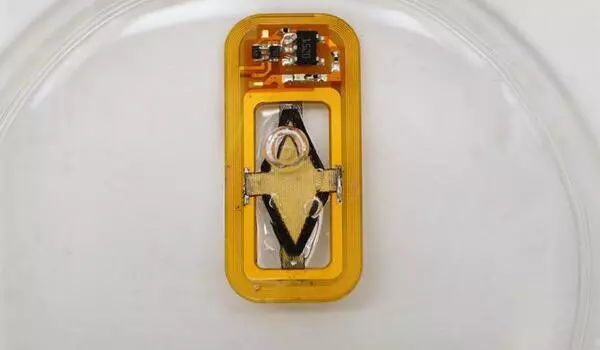Engineers created an implanted device with hundreds of thousands of islet cells and its own onboard oxygen factory to keep the cells healthy. A device like this could help Type 1 diabetes patients avoid the need for insulin injections.
Implanting pancreatic islet cells that can manufacture insulin when needed is one potential technique for treating Type 1 diabetes, which could liberate patients from needing regular insulin injections. However, once the cells are transplanted, they eventually run out of oxygen and cease generating insulin.
To overcome this barrier, MIT researchers created a unique implanted device that not only contains hundreds of thousands of insulin-producing islet cells but also has its own on-board oxygen factory that manufactures oxygen by splitting water vapor found in the body.
When implanted into diabetic mice, the researchers demonstrated that this device could maintain the mice’s blood glucose levels steady for at least a month. The researchers are now hoping to develop a larger version of the device, around the size of a stick of chewing gum, that will be tested in persons with Type 1 diabetes.
The vast majority of diabetics that are insulin-dependent are injecting themselves with insulin, and doing their very best, but they do not have healthy blood sugar levels. If you look at their blood sugar levels, even for people who are very dedicated to being careful, they just can’t match what a living pancreas can do.
Daniel Anderson
“Think of this as a living medical device made of human cells that secrete insulin and an electronic life support system.” “We’re excited by the progress so far, and we’re really hopeful that this technology will end up helping patients,” says Daniel Anderson, a professor in MIT’s Department of Chemical Engineering, a member of MIT’s Koch Institute for Integrative Cancer Research, and the study’s senior author.
While the researchers’ primary focus is on diabetes treatment, they believe that this type of gadget might be used to treat other conditions that require regular administration of therapeutic proteins.
MIT Research Scientist Siddharth Krishnan is the lead author of the paper, which appears today in the Proceedings of the National Academy of Sciences. The research team also includes several other researchers from MIT, including Robert Langer, the David H. Koch Institute Professor at MIT and a member of the Koch Institute, as well as researchers from Boston Children’s Hospital.

Replacing injections
Most Type 1 diabetes patients must carefully check their blood glucose levels and inject themselves with insulin at least once each day. However, this procedure does not replicate the body’s natural ability to regulate blood glucose levels.
“The vast majority of diabetics that are insulin-dependent are injecting themselves with insulin, and doing their very best, but they do not have healthy blood sugar levels,” said Anderson. “If you look at their blood sugar levels, even for people that are very dedicated to being careful, they just can’t match what a living pancreas can do.”
A better option would be to implant cells that make insulin whenever the patient’s blood glucose levels rise. Some diabetes patients have received transplanted islet cells from human cadavers, which can result in long-term diabetic control; however, these patients must take immunosuppressive medicines to keep their bodies from rejecting the implanted cells.
Researchers have now demonstrated similar effectiveness with islet cells produced from stem cells, but patients who receive those cells must also take immunosuppressive medicines. Another option for avoiding the use of immunosuppressive medicines is to encapsulate the transplanted cells within a flexible device that protects the cells from the immune system. However, finding a consistent oxygen source for these enclosed cells has been difficult.
Some experimental devices, including one that has been tested in clinical trials, feature an oxygen chamber that can supply the cells, but this chamber needs to be reloaded periodically. Other researchers have developed implants that include chemical reagents that can generate oxygen, but these also run out eventually.
The MIT team took a different approach that could potentially generate oxygen indefinitely, by splitting water. This is done using a proton-exchange membrane – a technology originally deployed to generate hydrogen in fuel cells – located within the device. This membrane can split water vapor (found abundantly in the body) into hydrogen, which diffuses harmlessly away, and oxygen, which goes into a storage chamber that feeds the islet cells through a thin, oxygen-permeable membrane.
This method has the enormous advantage of not requiring any wires or batteries. To split this water vapor, a little voltage (approximately 2 volts) is required, which is generated by a phenomenon known as resonant inductive coupling. Outside the body, a tuned magnetic coil delivers electricity to a small, flexible antenna within the device, enabling for wireless power transfer. It does, however, necessitate the use of an external coil, which the researchers believe might be worn as a patch on the patient’s skin.
Drugs on demand
The researchers tested their device, which is roughly the size of a quarter, in diabetic mice after building it. The device with the oxygen-generating, water-splitting membrane was given to one set of mice, whereas the other received islet cells without any supplemental oxygen. In mice with completely working immune systems, the devices were implanted just beneath the skin.
The researchers discovered that mice implanted with the oxygen-generating gadget could keep their blood glucose levels normal, comparable to healthy animals. However, mice with the nonoxygenated device were hyperglycemic (had high blood sugar) within two weeks.
When any type of medical device is implanted in the body, the immune system’s attack causes a buildup of scar tissue termed fibrosis, which can limit the device’s function. Although scar tissue did form around the implants utilized in this trial, the device’s success in managing blood glucose levels implies that insulin and glucose were still able to diffuse out of the device.
This method could potentially be used to transfer cells that create other types of therapeutic proteins that must be administered over time. The researchers demonstrated that the gadget could also retain alive cells that make erythropoietin, a protein that increases red blood cell synthesis, in this study.
















